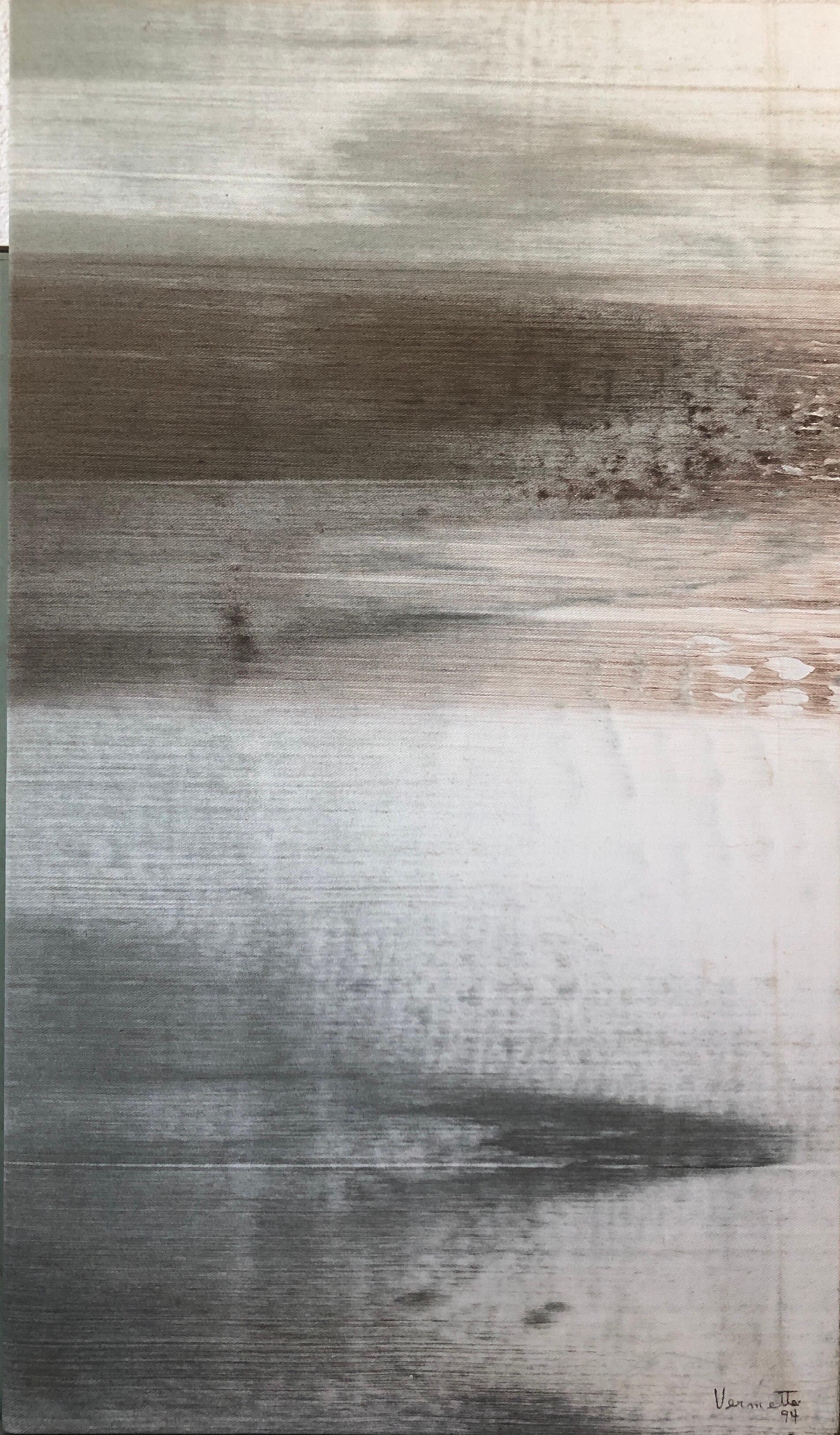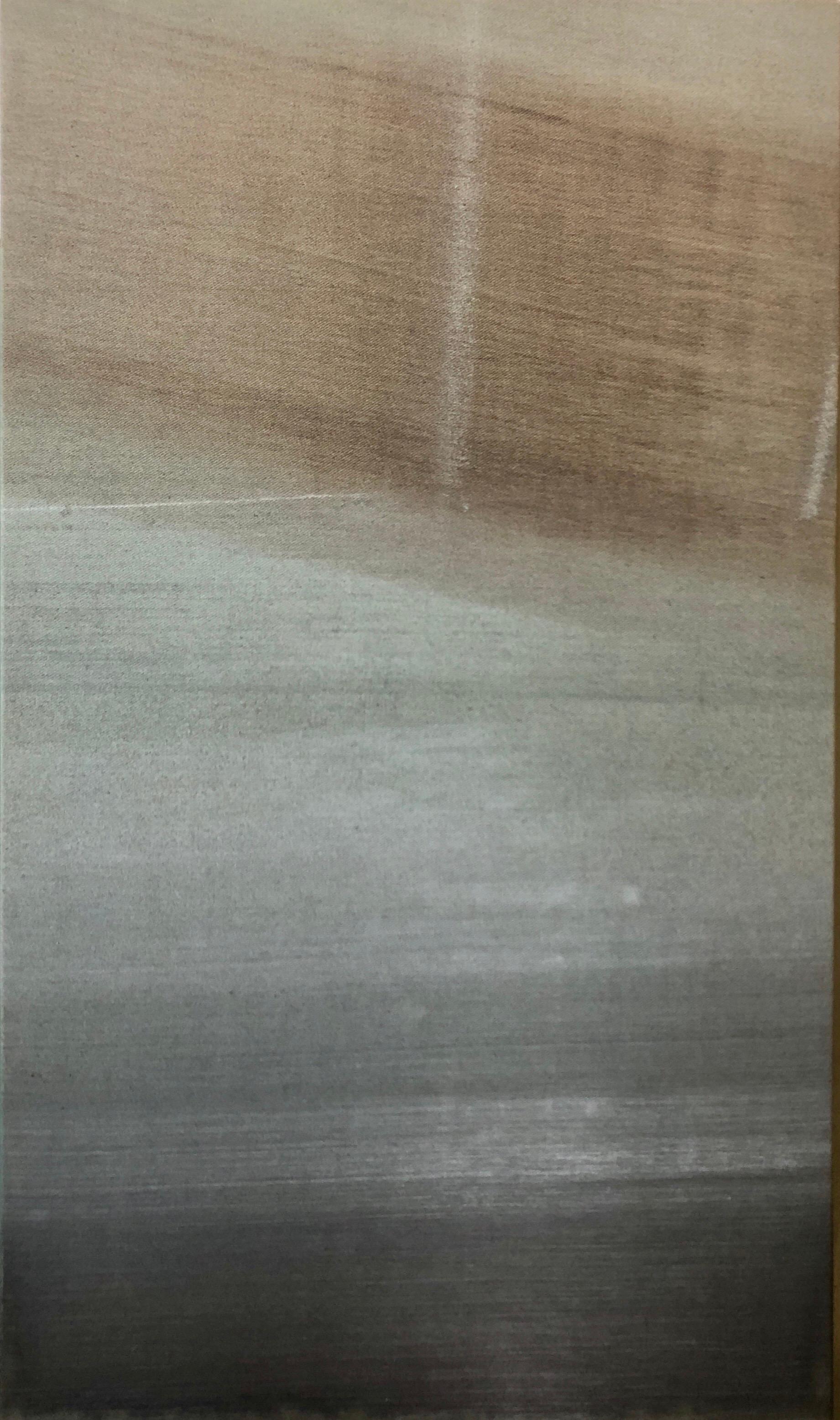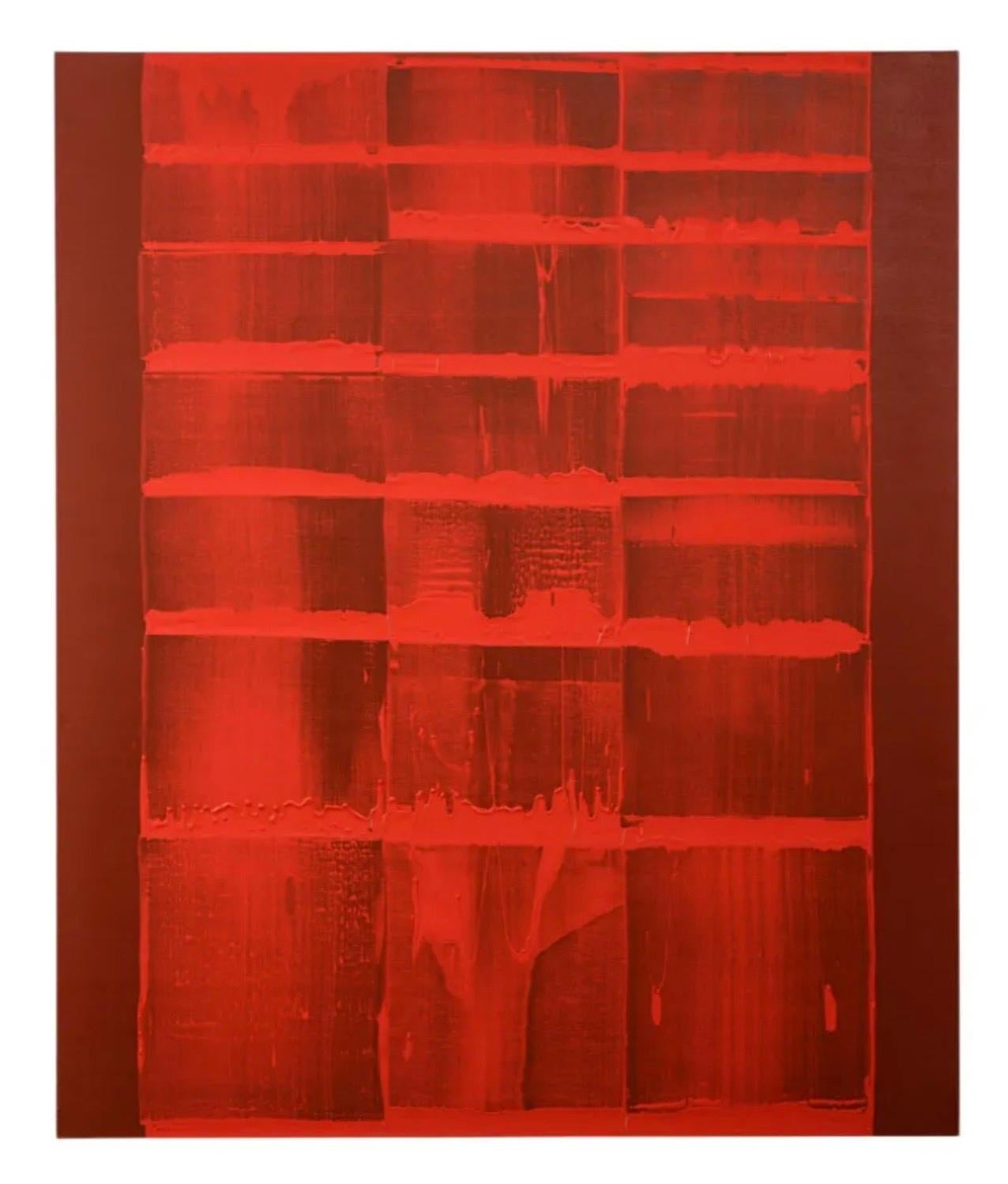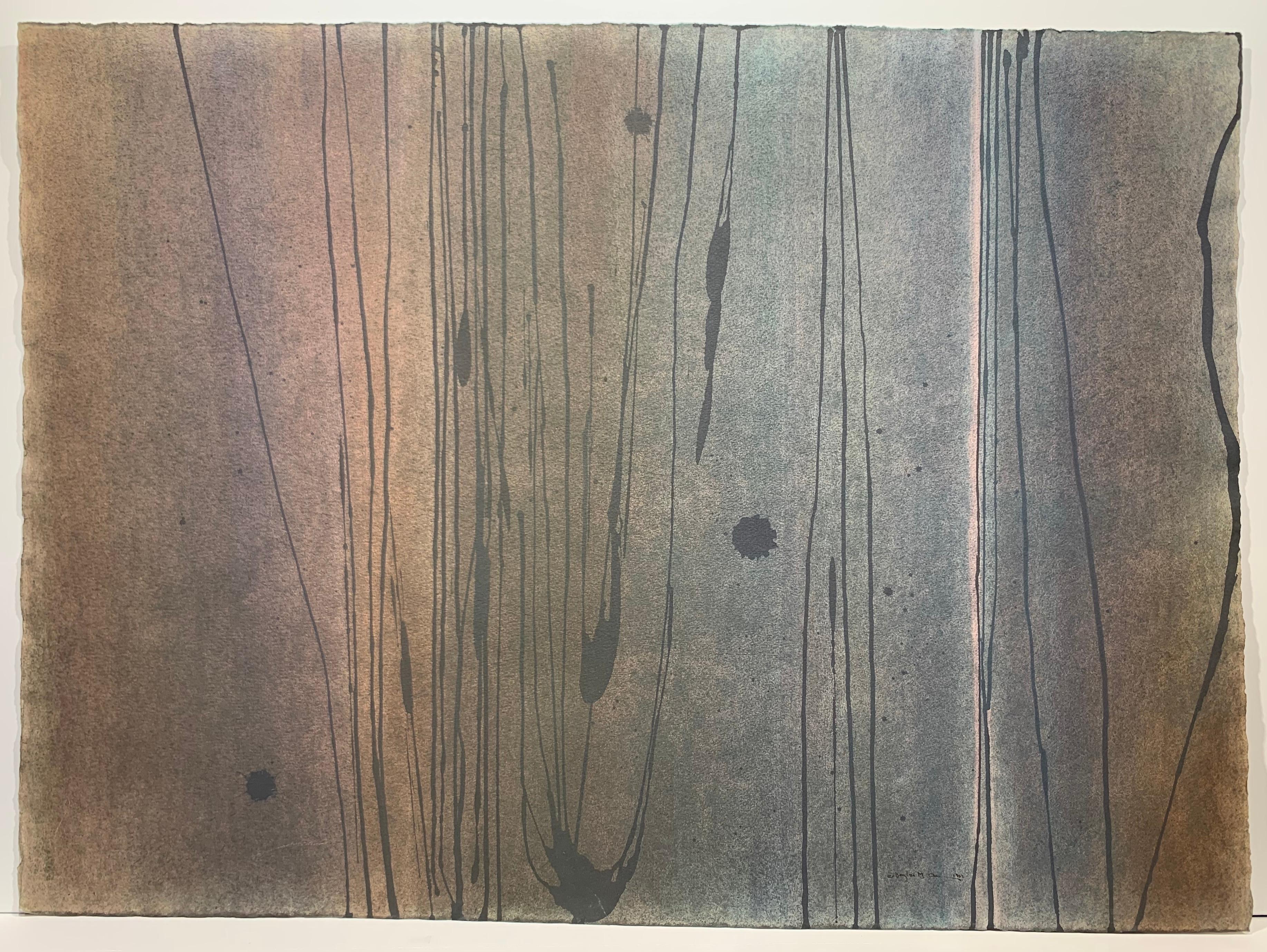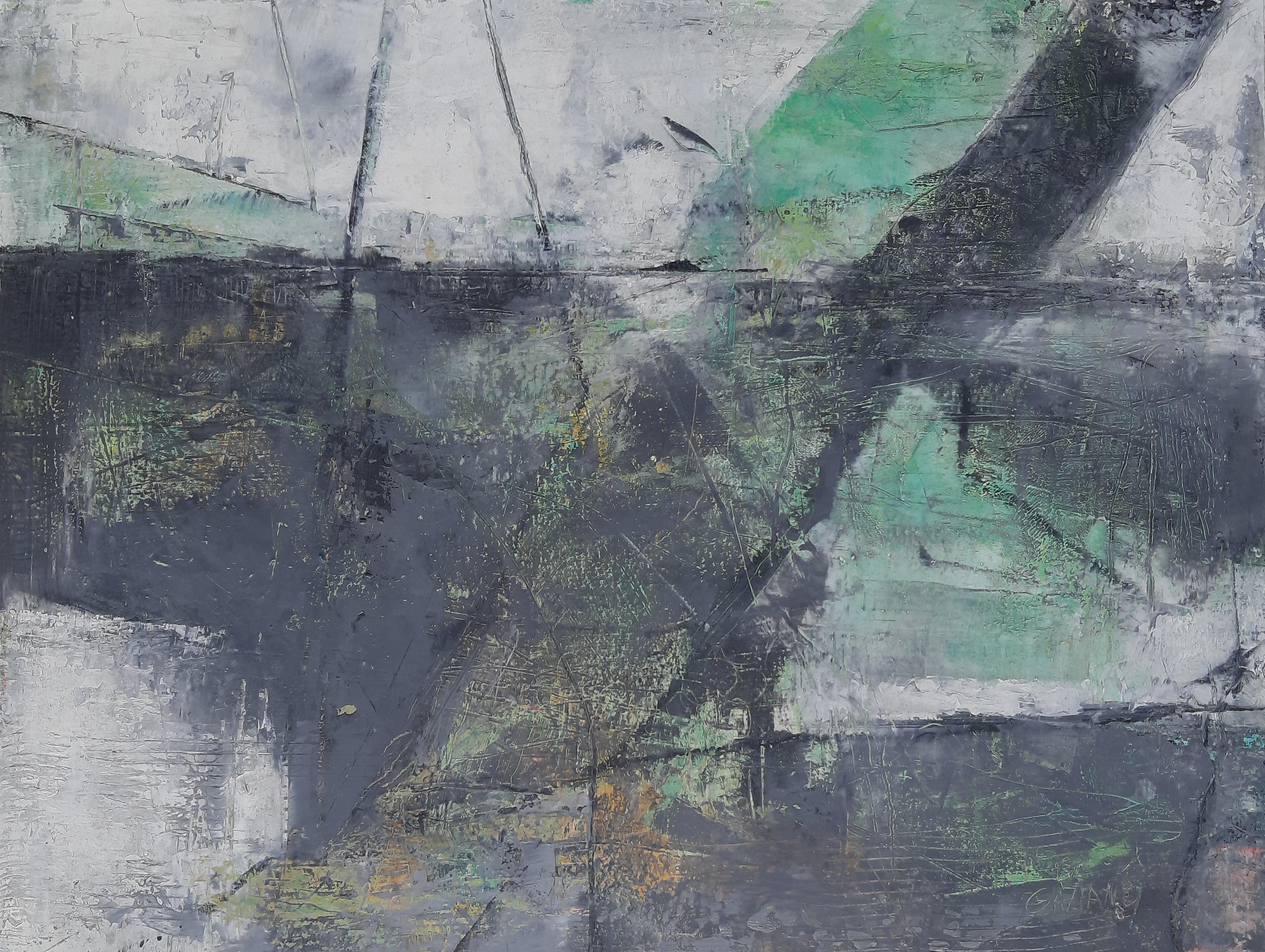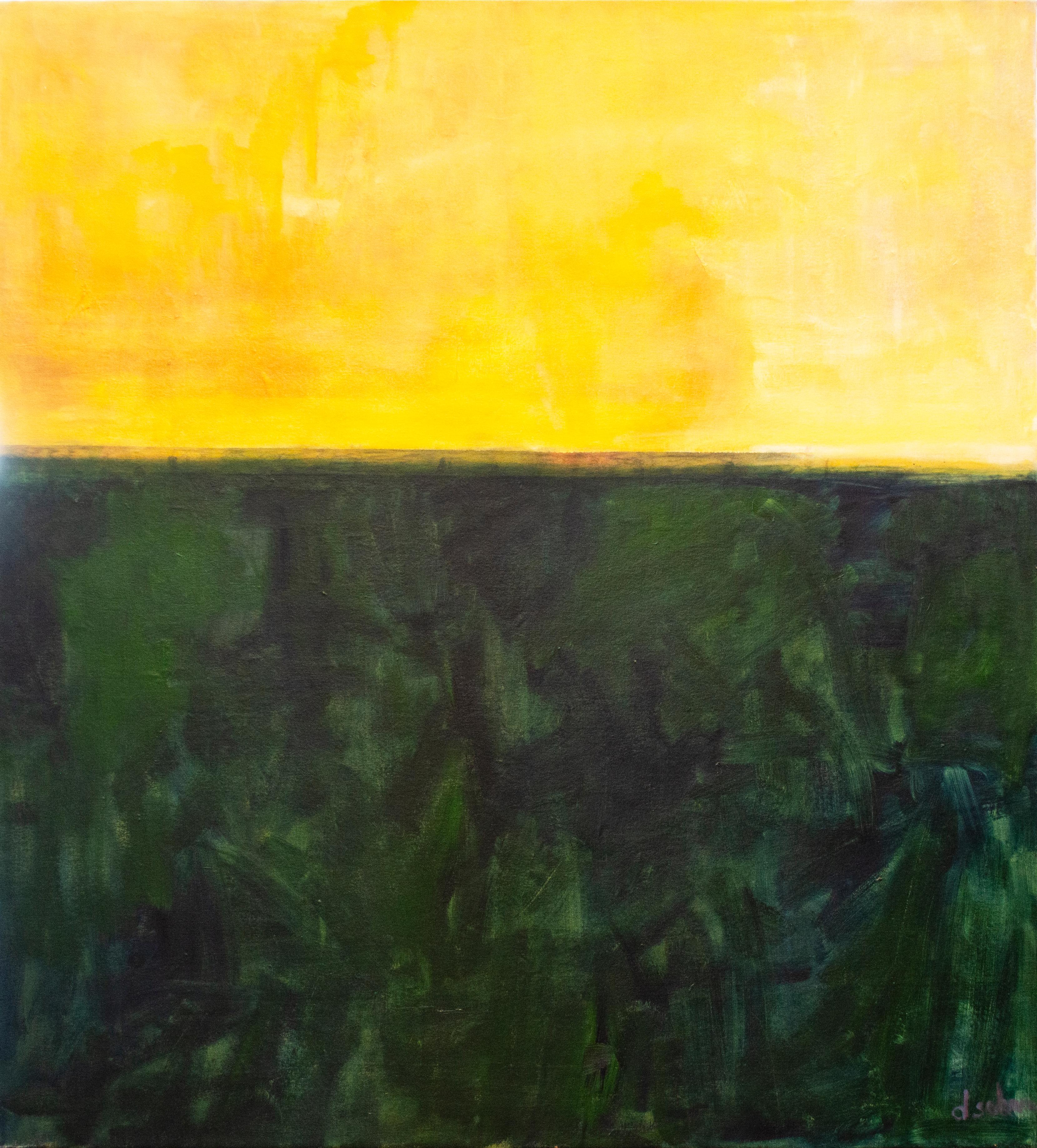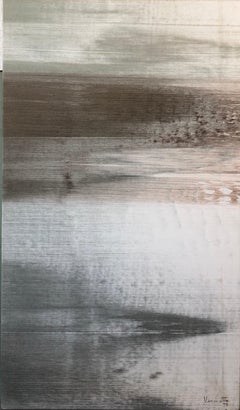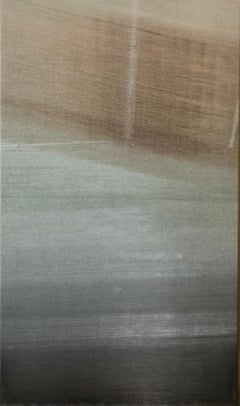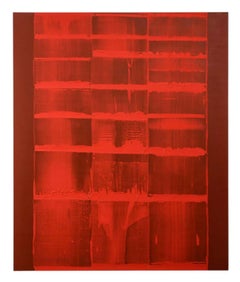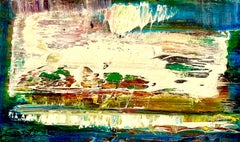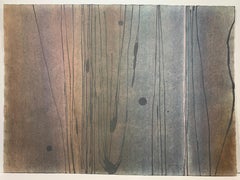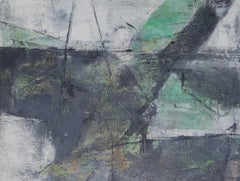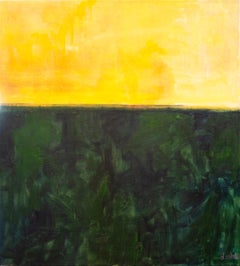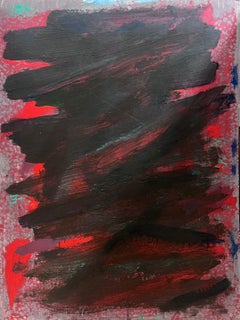Items Similar to Canadian Modernist Abstract Expressionist Painting Color Field Claude Vermette
Want more images or videos?
Request additional images or videos from the seller
1 of 13
Claude VermetteCanadian Modernist Abstract Expressionist Painting Color Field Claude Vermette1994
1994
$3,000
£2,268.72
€2,598.69
CA$4,203.72
A$4,589.05
CHF 2,416.19
MX$54,971.47
NOK 30,902.20
SEK 28,214.22
DKK 19,412.79
About the Item
Claude Vermette R.C.A. is a Canadian ceramicist and painter who was born in Montreal, Quebec, August 10, 1930 and who died in Sainte-Agathe-des-Monts, April 21, 2006. Artist of international reputation, he made important contributions to the ceramic arts in Canada
As a ceramist who worked in the architecture field, Claude Vermette is a pioneer in Québec and in Canada with regards to this type of artistic expression. The bursts of colours of his wall size mural ceramics, the warmth of their hues and the play of their textures brought a human dimension in architectural spaces that were often grey and frigid. In his abstract paintings as well as in his prints and watercolours, Claude Vermette pursued this bold approach while constantly renewing and expanding the possibilities of colour and light. His work works with gradations of color field and shifting light.
A native of Montreal, Quebec, Claude Vermette studied art under the guidance of Brother Jerome, c.s.c. at Notre-Dame College while also attending the Collège Saint-Laurent and the college of the Clercs de Saint-Viateur for his academic studies. Through his contact with Brother Jerome, he met Paul-Emile Borduas and joined the Automatiste group of emerging artists. They were influenced by Surrealism and its theory of automatism. Members included Marcel Barbeau, Roger Fauteux, Claude Gauvreau, Jean-Paul Riopelle, Pierre Gauvreau, Fernand Leduc, Jean-Paul Mousseau, Marcelle Ferron and Françoise Sullivan. He was considered too young by Borduas to sign the 1948 "Refus Global" (Global denial), but he was present at the launch of this manifesto, which was destined to become famous in Québec's contemporary history. Drawing, painting and ceramics were then his main modes of expression.
His first exhibitions in 1948, 1950 and 1952 caused him to be noticed by art critics who praised his talent and perceived the promise a bright future. In 1952, his interest in ceramics expanded during a study tour in Europe and especially in Italy where he met the architect Gio Ponti, a major player in the rebirth of modern Italian design and founder of the magazine Domus and the sculptor-ceramist Fausto Melotti. Another decisive encounter is that of the Finnish architect, Alvar Aalto.
Thereafter, Claude Vermette concentrated his efforts on architectural ceramics for which he created new forms of composition for the clay, a wider variety of modules for tiles and bricks, and new patented enamels. All these innovations resulted in much appreciation regarding the quality and sustainability of his ceramics, notably in the context of the Canadian climate and its gruelling winters. His bricks and tiles also earned him the 1962 first prize for industrial design.
In 1953, the then 23 years old artist produced his first great work in ceramics: the huge background of the main altar and the whole ceiling of the new chapel of the Seminary of Chicoutimi. There followed a career of twenty-five years as ceramist characterized by close collaboration with architects and engineers, during which he produced large works in more than a hundred public buildings, including pavilions and buildings connected to the Montreal World's Fair in 1967, at Osaka in 1970, at the 1976 Summer Olympics held in Montreal as well as in many schools, churches, courthouses (including those in Montreal, St-Hyacinthe and at Percé in the Gaspé Peninsula ), hospitals (including those of Notre-Dame and Marie-Enfant in Montréal, and Amos in Abitibi), universities (including that of Montréal, McGill, Laval and Sherbrooke), government buildings, airports (Pierre Elliott Trudeau, Mirabel and Molton), in more than a dozen Montreal subway stations (including Saint-Laurent, Peel, Berri-UQAM, Laurier) and other buildings, including those of General Motors in New York City, MacMillan Bloedel in Vancouver, Bell Canada in Toronto, Canadian National, Canadian Pacific, Texaco Canada and Quebecor to name a few more. He also created many works, such as ceramic fireplaces mantles and wall murals for private mansions. His works are also found in museums, including the Montreal Museum of Fine Arts and the Musée national des beaux-arts du Québec. Vermette authored numerous projects for the integration of art into architecture, notably at the 1967 World’s Fair in Montreal, the 1970 World’s Fair in Osaka and the 1976 Olympic Games in Montreal. His ceramic designs (murals, halls, parquet floors) can still be found in schools, churches, courthouses, hospitals, airports and office buildings (Montreal, Toronto, New York), as well as in a dozen Montreal subway stations, including Saint-Laurent, Peel, Berri-UQAM and Laurier. Vermette also explored printmaking, bronze sculptures, watercolor painting and oil painting over the course of his career. At the time of his death, he had just completed the designs for five outdoor murals at the Pavillon du Lac des Castors in Mount Royal Park. These were unveiled in January 2006.
Claude Vermette also felt the need to pursue research that initially evolved into the creation of small-scale ceramic works where he experimented with new forms, textures and glazes and later also included engravings, sculptures and especially painting. He was further distinguished by mastery in engraving, taking advantage of relief materials that linked the play of light: evidenced by its white on white prints and art book Blanc-Seeing when it operates in its many variations, the latter accompanied by texts by the poet Eugene Cloutier. These prints have inspired the realization of small sculptures.
The artist uses his experiences as game textures, reliefs and light of his prints into white concrete works, thereby making the building for the Caisse populaire Laurier in Ottawa a dozen bas-reliefs of white concrete, large and small dimensions, varying textures, thicknesses and relief printed to the material. Vermette was also interested in creating watercolor works of all sizes such as, among them, a giant mural of over 80 meters long at Bell Trinity Square Office in Toronto. Another book of art is born, Gestes de Liberté, this time in collaboration with the economist, André Raynauld. Art and science! This challenge of uniting the work of a painter and that of an economist is reflected in the execution of this book which includes an abstract watercolor where dominate color and movement and a series of nine articles on the theme of freedom.
In the last thirty years of his life, Claude Vermette devoted most of his activity to painting. His works has been exhibited in Canada and abroad and is represented in the collections of public institutions, large corporations as well as private collections.
At the time of his death, he had just finished replacing the five exterior aluminium enameled murals he had created for the walls of the Beaver Lake Pavilion on Mount-Royal in Montréal, which were initially made in ceramic in 1958 and were unfortunately victims of demolition. This historic pavilion was renovated by the City of Montreal and inaugurated in January 2006. To mark the quality of the achievement, the City was awarded the Orange Prize 2006 by the organization Sauvons Montreal in category Intervention heritage.
He was the husband of the artist Mariette Rousseau-Vermette, tapestry weaver who, by the aesthetic and technical qualities of the tapestries and the impressive number of monumental works, has earned an international reputation. The couple who had two children lived in Ste-Adele. Both had a professional art career that spans over a period of sixty years.
Selected commissions and collections:
Canadian National Bank, Montreal, Canada;
General Motors corporate offices, New York, New York;
Macmillan Bloedel corporate offices, Vancouver, Canada;
Hall of Justice, Montreal, Canada;
Bell Canada, Toronto, Canada;
Hoffman BMW, Bloomfield, New Jersey;
Coopers Lybrand, Montreal, Canada;
Molton International Airport; Toronto, Canada;
Laurier Bank, Ottawa, Canada;
McGill University, Montreal.
Member: Royal Canadian Academy of Arts.
- Creator:
- Creation Year:1994
- Dimensions:Height: 31 in (78.74 cm)Width: 18 in (45.72 cm)Depth: 2 in (5.08 cm)
- Medium:
- Movement & Style:
- Period:
- Condition:good. minor wear. please see photos.
- Gallery Location:Surfside, FL
- Reference Number:1stDibs: LU38215092702
About the Seller
4.9
Platinum Seller
Premium sellers with a 4.7+ rating and 24-hour response times
Established in 1995
1stDibs seller since 2014
1,847 sales on 1stDibs
Typical response time: <1 hour
- ShippingRetrieving quote...Shipping from: Surfside, FL
- Return Policy
More From This Seller
View AllCanadian Modernist Abstract Expressionist Painting Color Field Claude Vermette
By Claude Vermette
Located in Surfside, FL
Claude Vermette R.C.A. is a Canadian ceramist and painter who was born in Montreal, Quebec, August 10, 1930 and who died in Sainte-Agathe-des-Monts, April 21, 2006. Artist of international reputation, he made important contributions to the ceramic arts in Canada
As a ceramist who worked in the architecture field, Claude Vermette is a pioneer in Québec and in Canada with regards to this type of artistic expression. The bursts of colours of his ceramics, the warmth of their hues and the play of their textures brought a human dimension in architectural spaces that were often grey and frigid. In his abstract paintings as well as in his prints and watercolours, Claude Vermette pursued this bold approach while constantly renewing and expanding the possibilities of colour and light. His work works with gradations of color field and shifting light.
A native of Montreal, Quebec, Claude Vermette studied art under the guidance of Brother Jerome, c.s.c. at Notre-Dame College while also attending the Collège Saint-Laurent and the college of the Clercs de Saint-Viateur for his academic studies. Through his contact with Brother Jerome, he met Paul-Emile Borduas and joined the Automatiste group of emerging artists. They were influenced by Surrealism and its theory of automatism. Members included Marcel Barbeau, Roger Fauteux, Claude Gauvreau, Jean-Paul Riopelle, Pierre Gauvreau, Fernand Leduc, Jean-Paul Mousseau, Marcelle Ferron and Françoise Sullivan...
Category
1990s Abstract Expressionist Abstract Paintings
Materials
Canvas, Oil
Canadian Modernist Abstract Expressionist Painting Color Field Claude Vermette
By Claude Vermette
Located in Surfside, FL
Claude Vermette R.C.A. is a Canadian ceramicist and painter who was born in Montreal, Quebec, August 10, 1930 and who died in Sainte-Agathe-des-Monts, April 21, 2006. Artist of international reputation, he made important contributions to the ceramic arts in Canada
As a ceramist who worked in the architecture field, Claude Vermette is a pioneer in Québec and in Canada with regards to this type of artistic expression. The bursts of colours of his wall size mural ceramics, the warmth of their hues and the play of their textures brought a human dimension in architectural spaces that were often grey and frigid. In his abstract paintings as well as in his prints and watercolours, Claude Vermette pursued this bold approach while constantly renewing and expanding the possibilities of colour and light. His work works with gradations of color field and shifting light.
A native of Montreal, Quebec, Claude Vermette studied art under the guidance of Brother Jerome, c.s.c. at Notre-Dame College while also attending the Collège Saint-Laurent and the college of the Clercs de Saint-Viateur for his academic studies. Through his contact with Brother Jerome, he met Paul-Emile Borduas and joined the Automatiste group of emerging artists. They were influenced by Surrealism and its theory of automatism. Members included Marcel Barbeau, Roger Fauteux, Claude Gauvreau, Jean-Paul Riopelle, Pierre Gauvreau, Fernand Leduc, Jean-Paul Mousseau, Marcelle Ferron and Françoise Sullivan...
Category
1990s Abstract Expressionist Abstract Paintings
Materials
Canvas, Oil
Large Oil Painting Color field, Minimalist, Abstract Expressionist John Zinsser
By John Zinsser
Located in Surfside, FL
John Zinsser
(American, b. 1961)
Iron City, 1997
oil on canvas
signed John Zinsser, titled and dated (verso)
72 x 60 inches
Done in bright vibrant shades of red.
American artist John Zinsser was born in New York City in 1961 and studied art, art history and literature at Yale University (where he did his senior thesis on Andy Warhol). He co-founded Journal of Contemporary Art in 1987 and lectures at The New School. He has had over 40 solo shows in the U.S. and Europe, and is known in Europe for his association with monochrome painters of a previous generation. Zinsser has been a devotee of postwar Abstract Expressionism and Minimalism for decades.
A native New Yorker, he came of age as an artist during the late 1980s and early 1990s alongside other now established abstract painters, including Richmond Burton, Gail Fitzgerald, Daniel Levine, Carl Ostendarp, Kate Shepherd, Cary Smith, Dan Walsh, Mary...
Category
1990s Abstract Expressionist Abstract Paintings
Materials
Canvas, Oil
American Vivid Abstract Expressionist Art Oil Painting Norman Carton, WPA Artist
By Norman Carton
Located in Surfside, FL
Norman Carton (1908 – 1980) was an American artist and educator known for abstract expressionist art. He was born in the Ukraine region of Imperial Russia and moved to the United States in 1922 where he spent most of his adult life.
A classically trained portrait and landscape artist, Carton also worked as a drafter, newspaper illustrator, muralist, theater set designer, photographer, and fabric designer and spent most of his mature life as an art educator. Carton showed in and continues to be shown in many solo and group exhibitions. His work is included in numerous museums and private collections throughout the world.
Norman Carton was born in the Dnieper Ukraine territory of the Russian Empire in 1908. Escaping the turbulence of civil war massacres, he settled in Philadelphia in 1922 after years of constant flight. While attending the Pennsylvania Museum School of Industrial Art, Carton worked as a newspaper artist for the Philadelphia Record from 1928 to 1930 in the company of other illustrator/artists who had founded the Ashcan School, the beginnings of modern American art. From 1930 to 1935, he studied at the Pennsylvania Academy of Fine Arts under Henry McCarter, who was a pupil of Toulouse-Lautrec, Puvis de Chavanne, and Thomas Eakins. Arthur Carles, especially with his sense of color, and the architect John Harbison also provided tutelage and inspiration. Following his time at the Pennsylvania Academy of Fine Arts, Carton studied at the Barnes Foundation from 1935 to 1936 where he was influenced by an intellectual climate led by visiting lecturers John Dewey and Bertrand Russell as well as daily access to Albert C. Barnes and his art collection.
Carton was awarded the Cresson Traveling Scholarship in 1934 which allowed him to travel through Europe and study in Paris. There he expanded his artistic horizons with influences stemming from Henri Matisse, Pablo Picasso, Chaim Soutine, and Wassily Kandinsky. While at the Pennsylvania Academy of Fine Arts, Carton was also awarded the Toppan Prize for figure painting as well as the Thouron Composition Prize. He received numerous commissions as a portrait artist, social realist, sculptor, and theatrical stage designer as well as academic scholarships. During this time, Carton worked as a scenery designer at Sparks Scenic Studios, a drafter at the Philadelphia Enameling Works, and a fine art lithographer.
From 1939 to 1942, the Works Progress Administration (WPA) Federal Art Project employed Carton as a muralist and easel artist. He collaborated with architect George Howe. The WPA commissioned Carton to paint major murals at the Helen Fleischer Vocational School for Girls in Philadelphia, the Officers’ Club at Camp Meade Army Base in Maryland, and in the city of Hidalgo, Mexico. Throughout the 1940s, Carton exhibited and won prizes for his semi-abstract Expressionist and Surrealist paintings. He socialized with and was inspired by Émile Gauguin and Fernand Leger. During World War II, Carton was a naval structural designer and draftsman at the Cramps...
Category
Mid-20th Century Abstract Expressionist Landscape Paintings
Materials
Canvas, Oil
Large California Modernist Abstract Laddie John Dill Abstract Oil Painting Art
By Laddie John Dill
Located in Surfside, FL
Laddie John Dill (American, b. 1943)
Untitled
Oil painting on canvas mounted on panel
Hand signed Laddie Dill (verso)
36 x 72 inches. (with frame 37 X 73)
Laddie John Dill was born ...
Category
1980s Post-Modern Abstract Paintings
Materials
Canvas, Oil, Board
Austrian Contemporary Abstract Expressionist Painting Vertical Lines of Color
By Rudi Molacek
Located in Surfside, FL
Rudi Molacek (Austrian-American, born 1948)
Vertical Colors, 2008, abstract bright acrylic on canvas, signed and dated along top edge of canvas, (unframed): 30"h x 24"w
It is a cascading rainbow of vibrant colors.
From a San Francisco Bay Area collection.
1948 born in Kindberg, Styria, Austria, studied economics in Vienna,
1985-91 Teaches at University of Applied Arts Vienna
As a photographer, Rudi Molacek learnt not only the principles of composition but also above all the photographs dependence on technology and the associated aesthetics of serial generation. When changing from photograph to painting, he sought a classic genre of painting, namely depiction of flowers with the rose as a preferred motif. This subject later also became the focus of his sculptural approach, as coloured aluminium sculpture, conceived for outdoor nature. He started to interpret painting and the panel painting as technical dispositives and experimented with various media, be they oil paintings, photo strips...
Category
Early 2000s Contemporary Abstract Paintings
Materials
Canvas, Acrylic
You May Also Like
#135 (Abstract Expressionist painting)
By Douglas M. Olsen
Located in Wilton Manors, FL
Douglas M. Olsen (b. 1960). #135, 1982. Watercolor on rag paper, 22 x 30 inches. Signed lower margin and on verso.
Category
20th Century Abstract Expressionist Abstract Paintings
Materials
Watercolor, Rag Paper
$200 Sale Price
60% Off
Abstract 3, Abstract Oil Painting
Located in San Francisco, CA
Artist Comments
Lighter shades of green and white contrast with the gray elements in this abstract composition. Scratches around the work provide a light texture. Artist Doroth...
Category
21st Century and Contemporary Abstract Abstract Paintings
Materials
Oil
"One Syllable, " Abstract Color Fields Oil on Canvas by Deirdre Schanen
By Deirdre Schanen
Located in Milwaukee, WI
"One Syllable" is an oil on canvas by Deirdre Schanen. Fields of colors are created next to each other. A yellow sky is created in the top of the piece with accents of orange and whi...
Category
2010s Contemporary Abstract Paintings
Materials
Canvas, Oil
French Expressionist Abstract 20th Century Oil Painting Blaze of Colors
Located in Cirencester, Gloucestershire
Abstract Expressionist composition
signed by Andre Guillou (French 1925-2017)
oil on board
board: 25 x 19.75 inches
provenance: the artists estate, France
condition: very good and so...
Category
Mid-20th Century Abstract Expressionist Abstract Paintings
Materials
Oil
Entre 2 calmes, Contemporary textured Oil on Canvas, Abstract, Geometric art
By SOPHIE DUMONT
Located in LANGRUNE-SUR-MER, FR
In Between Two Calms, Sophie Dumont explores a suspended space, situated between two moments of stillness. The composition unfolds through broad horizontal layers, where soft tones o...
Category
21st Century and Contemporary Abstract Abstract Paintings
Materials
Oil
"Boundary Between, " Abstract Oil Painting
Located in Westport, CT
This vertical original abstract painting by Tony Iadicicco is made with oil paint on gallery wrapped canvas. This piece features three dark blue parallel horizontal lines, with white...
Category
2010s Abstract Abstract Paintings
Materials
Canvas, Oil
